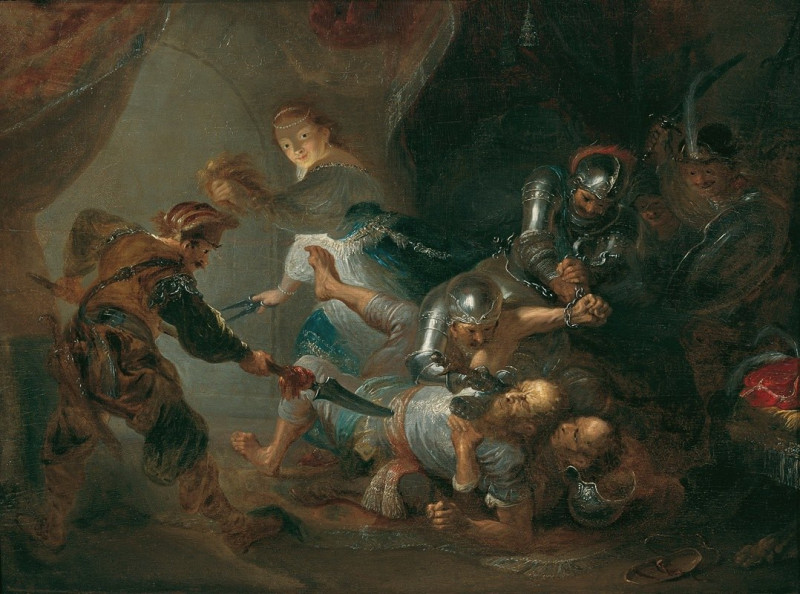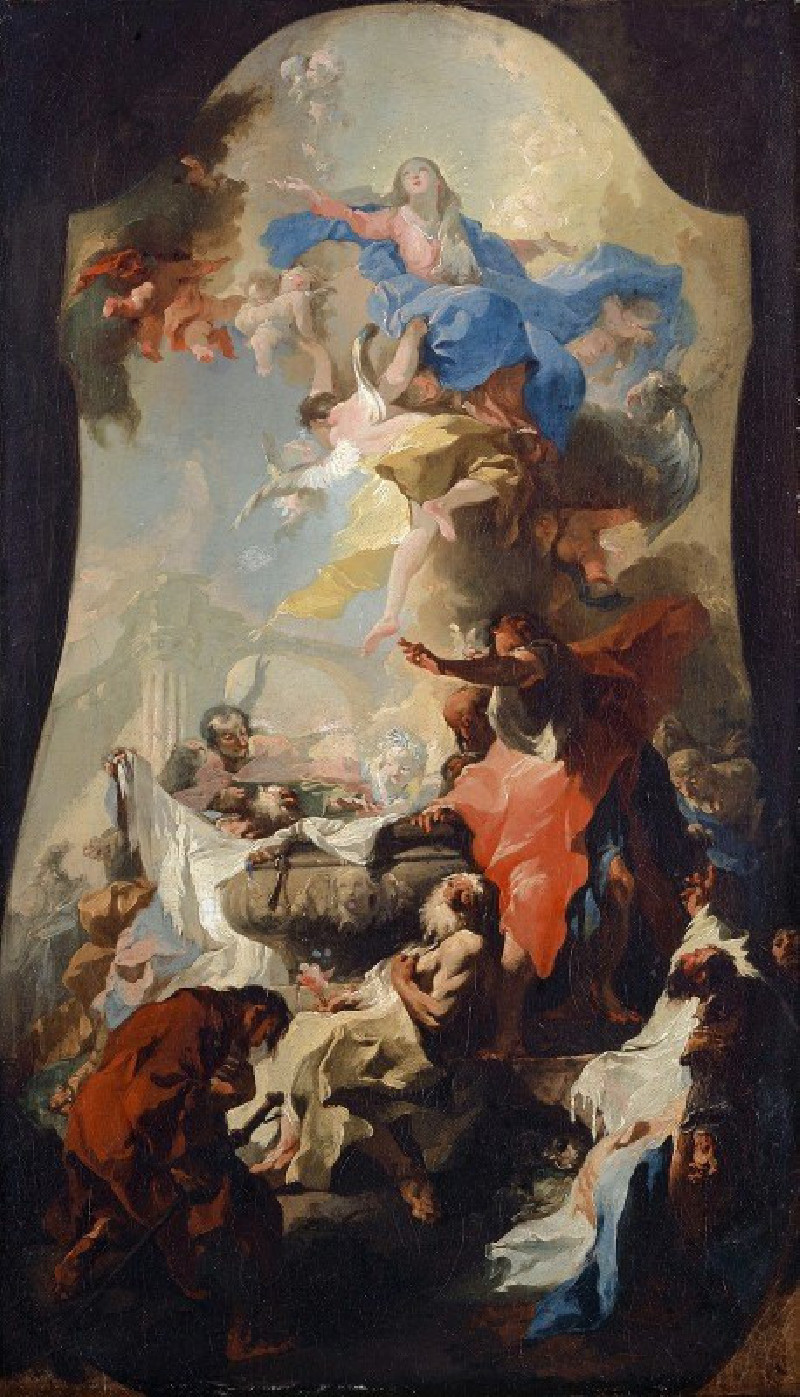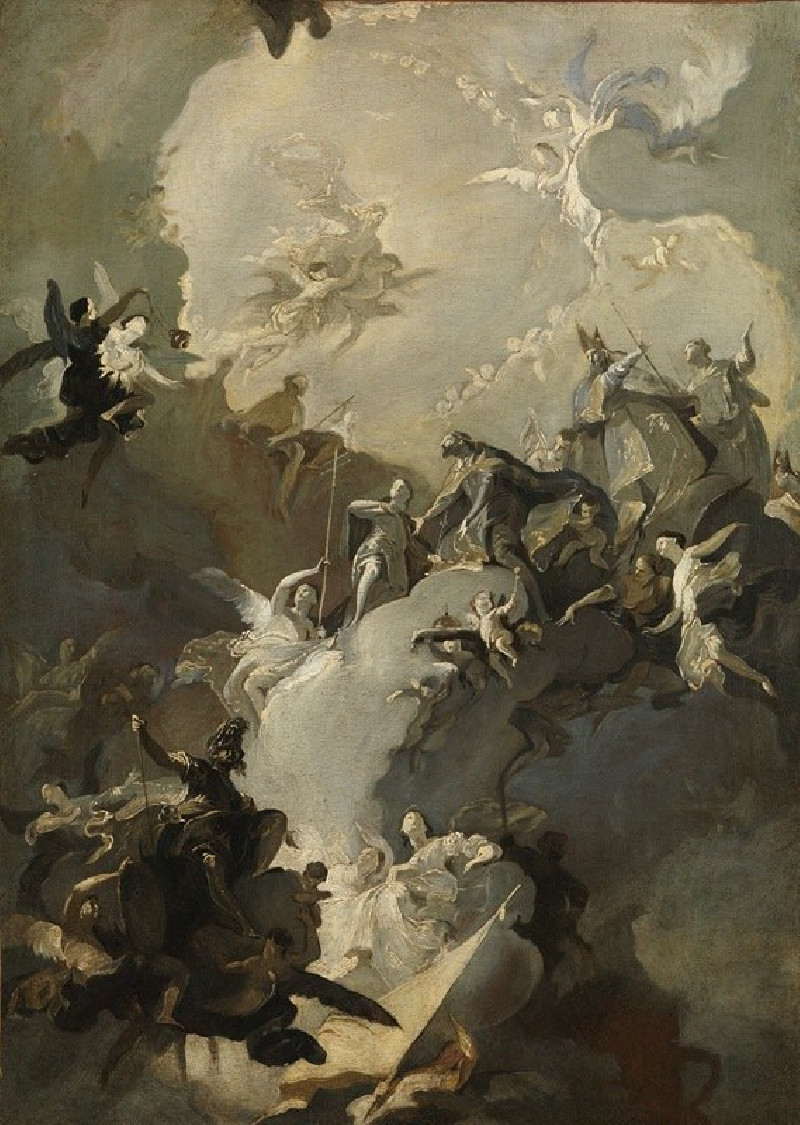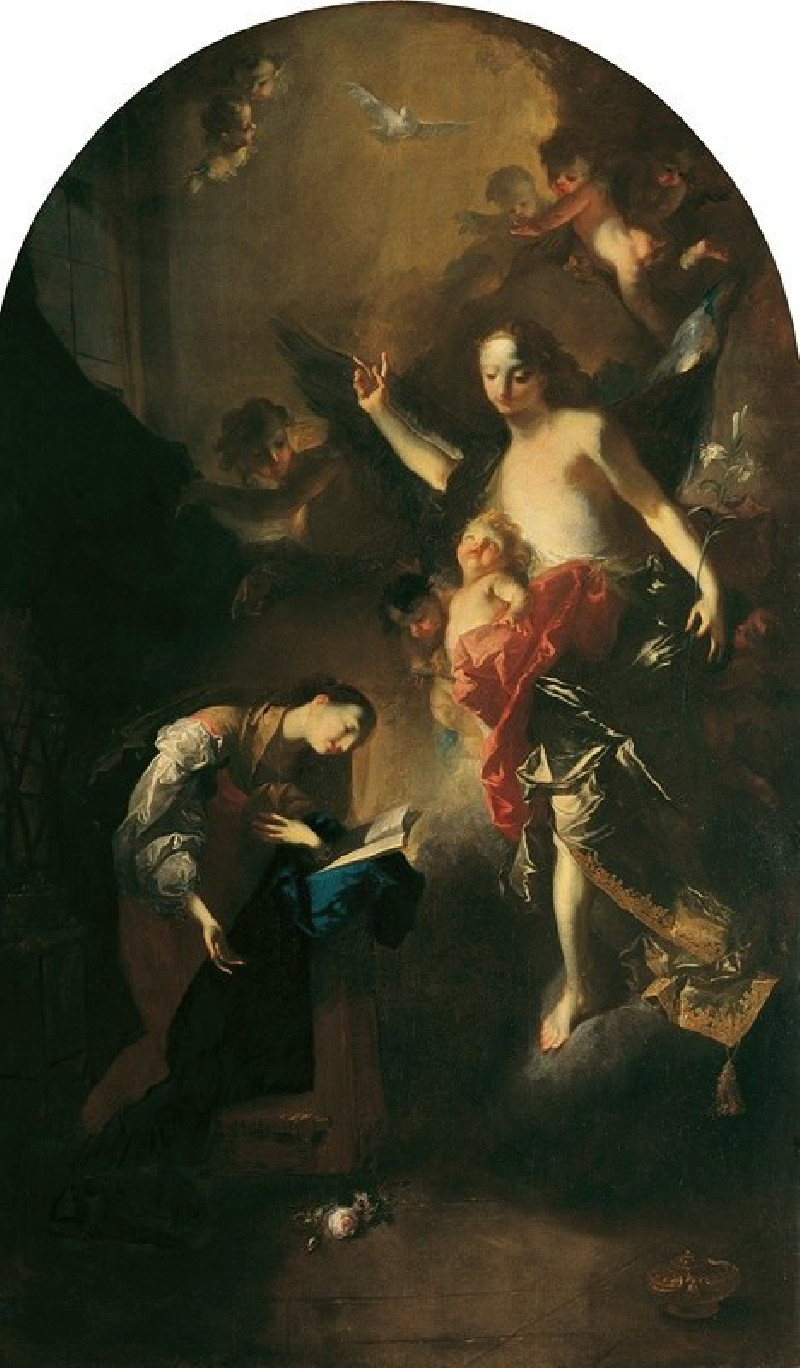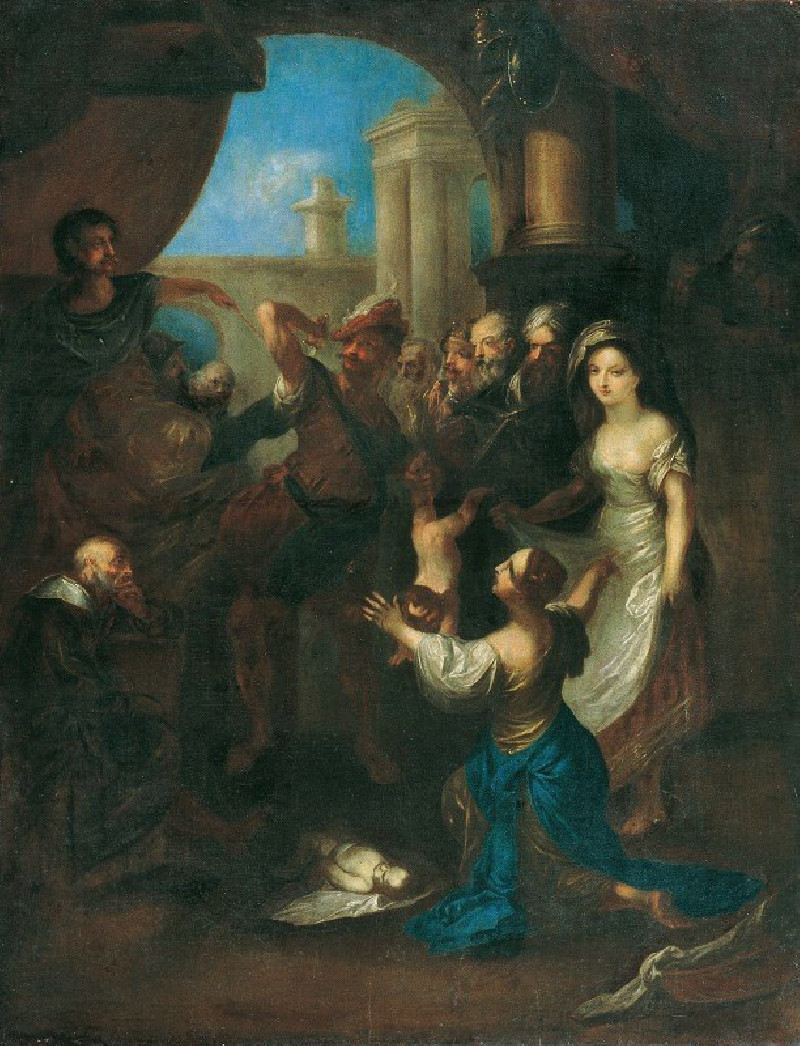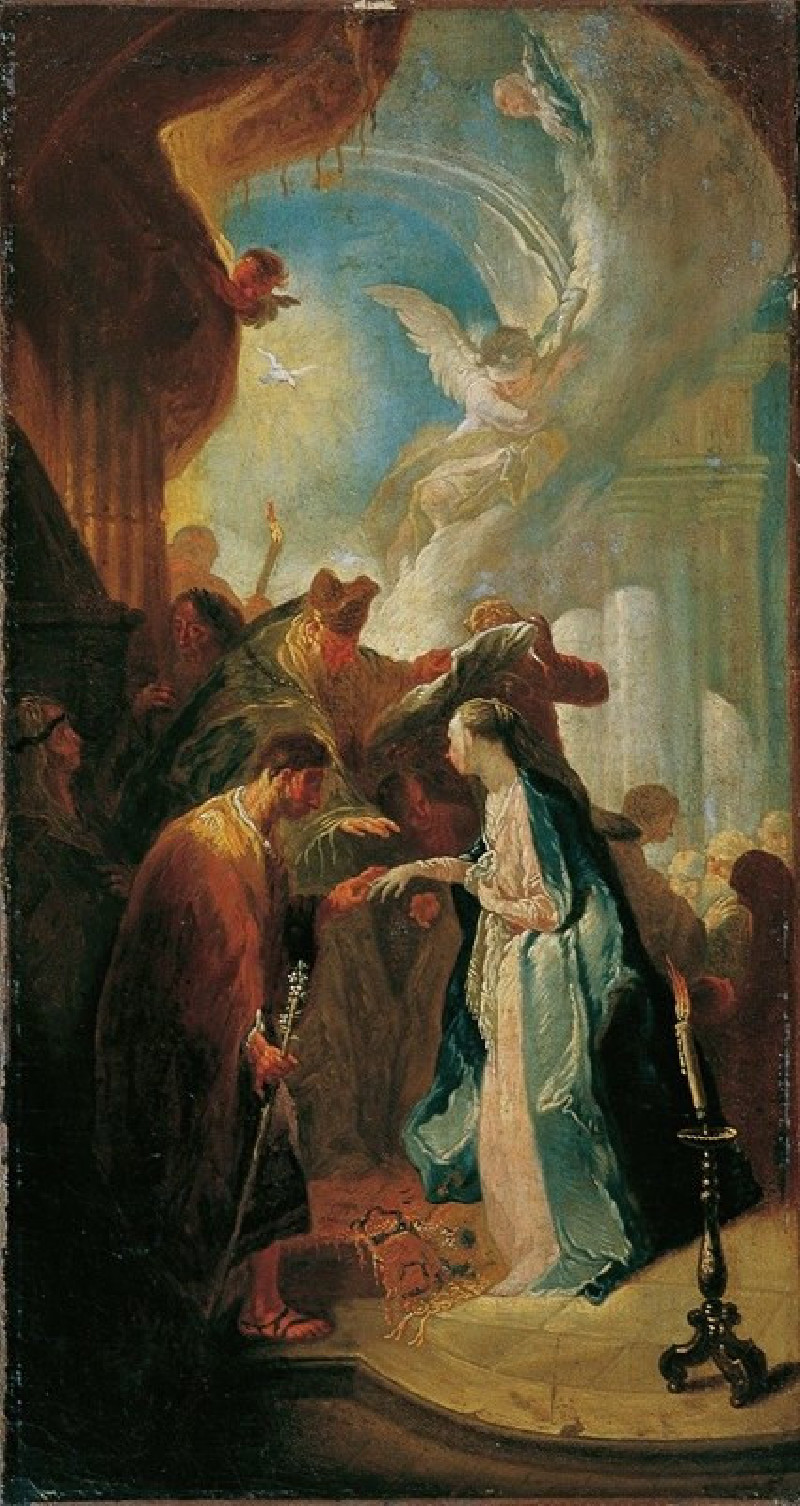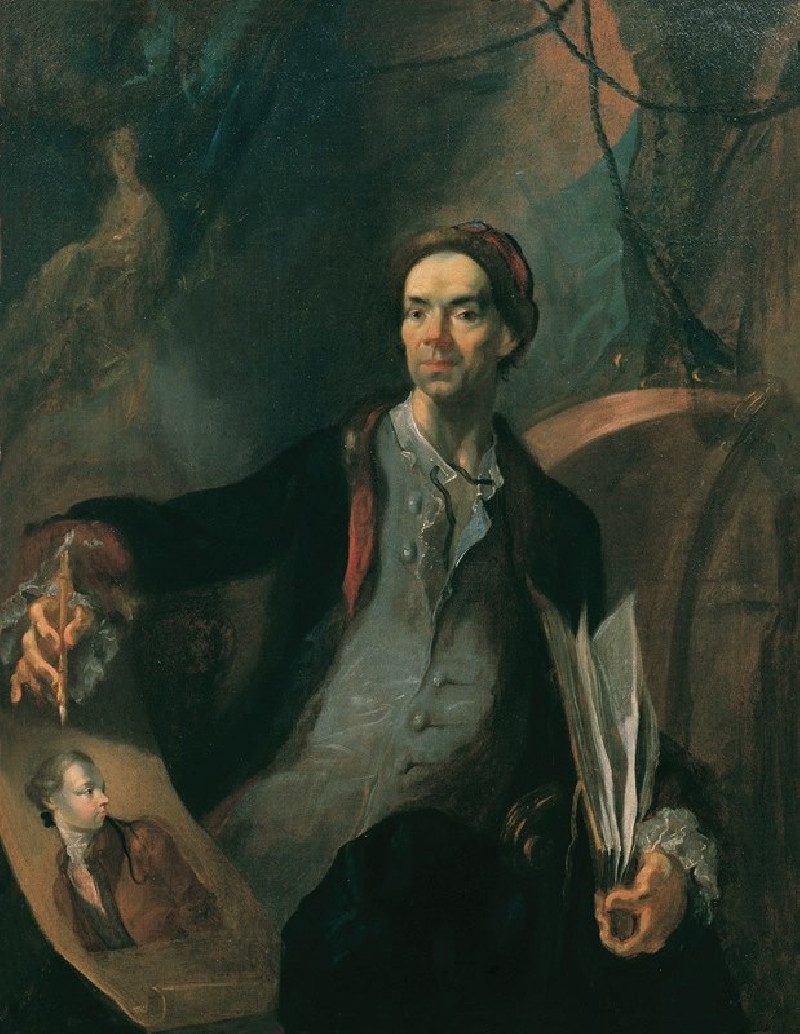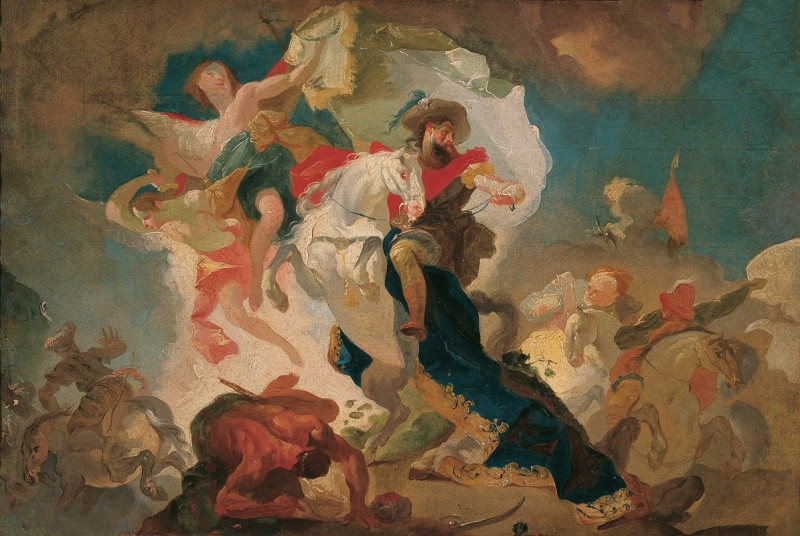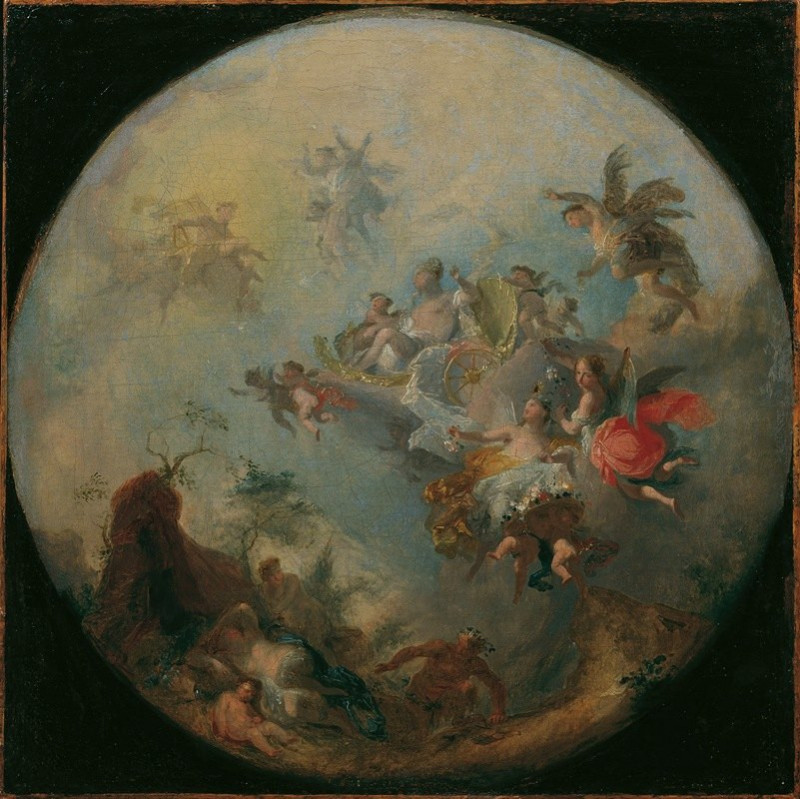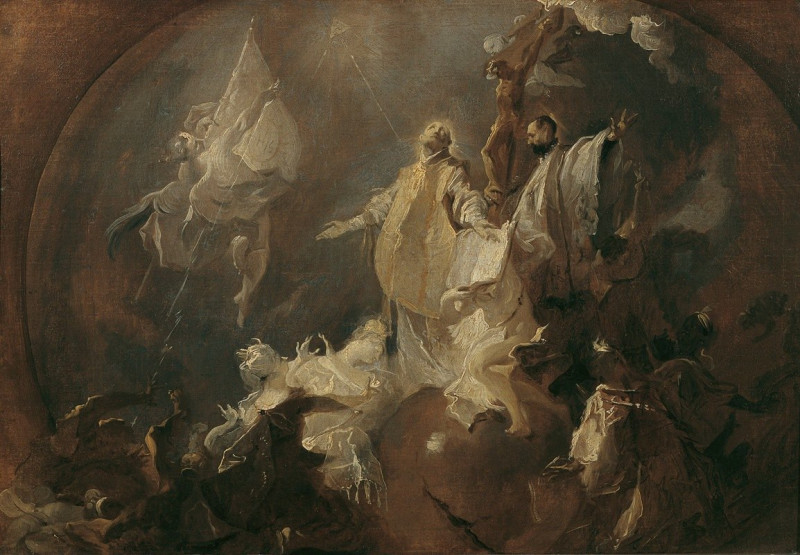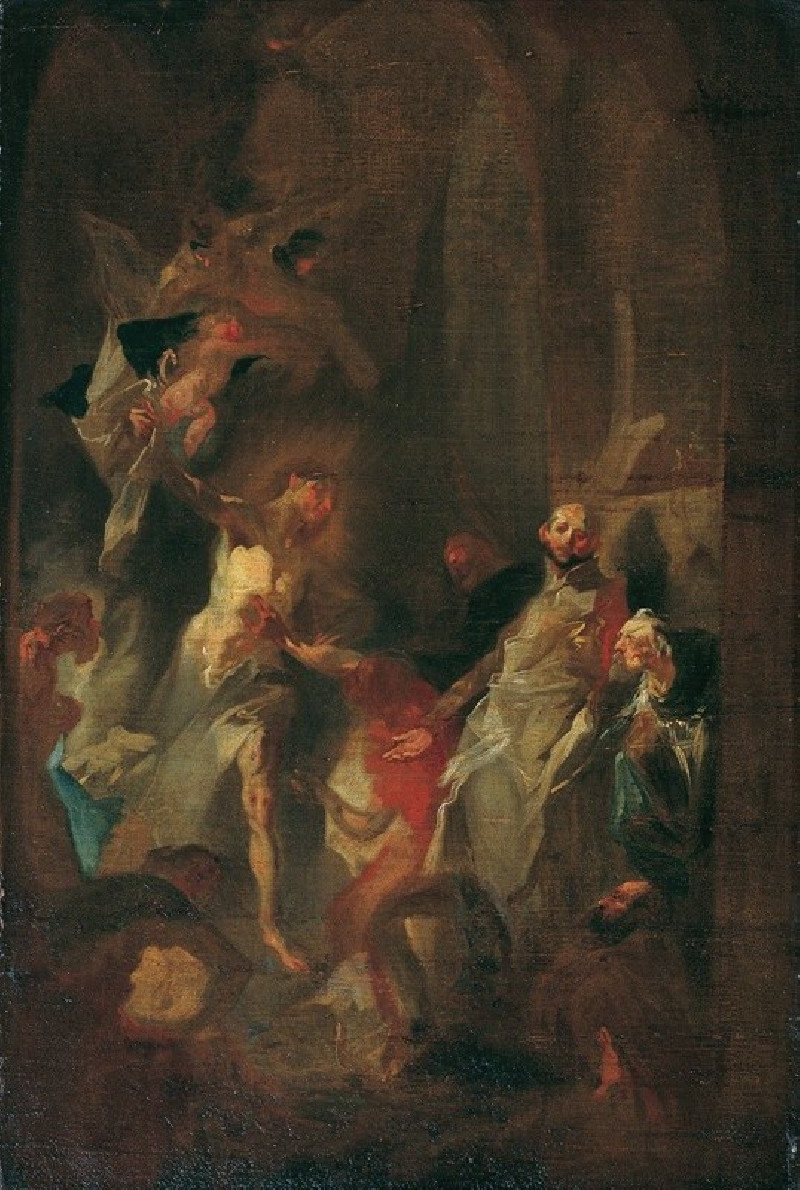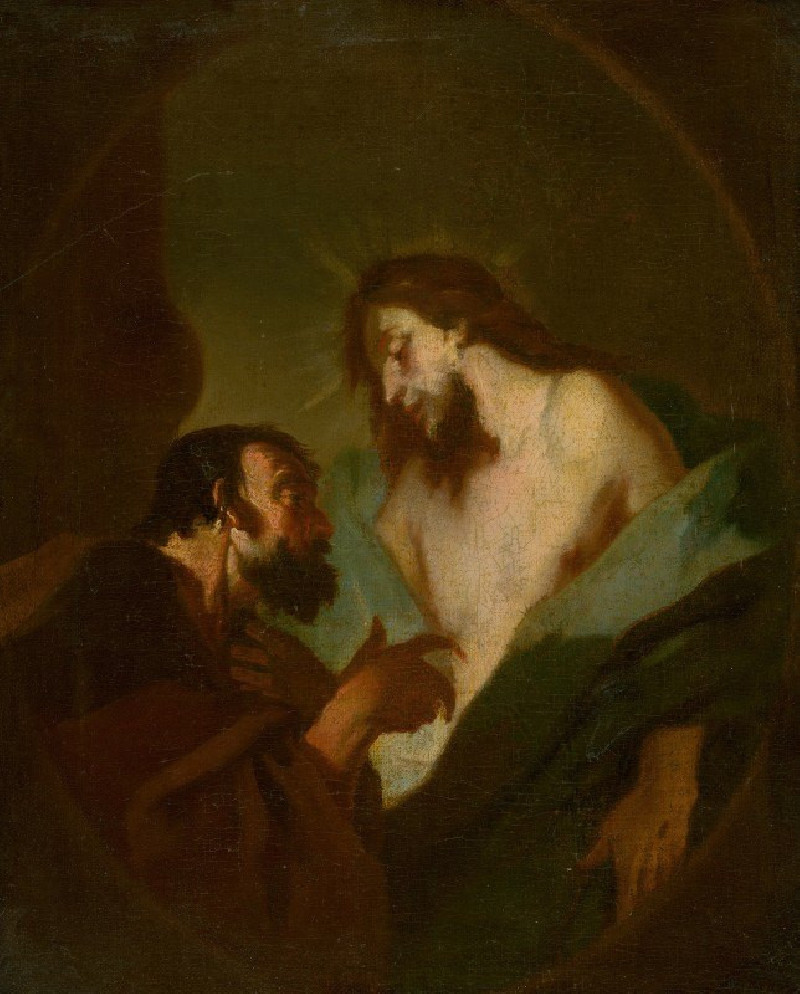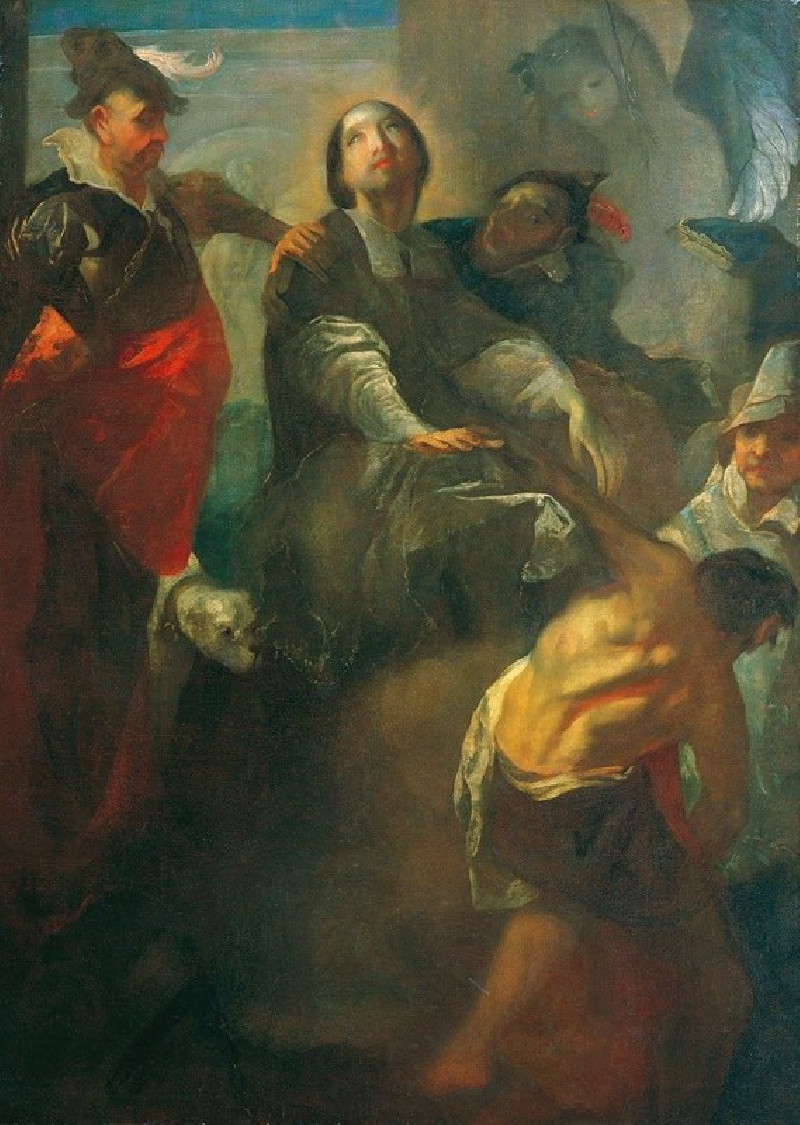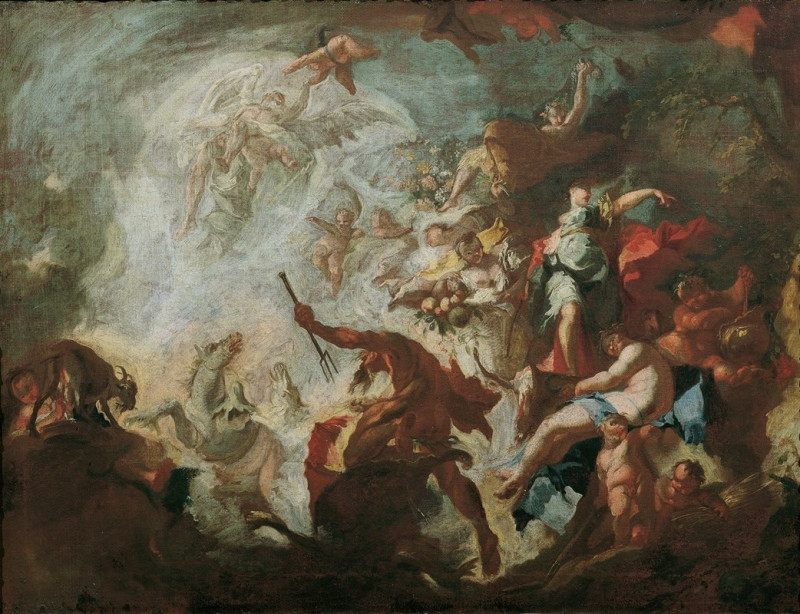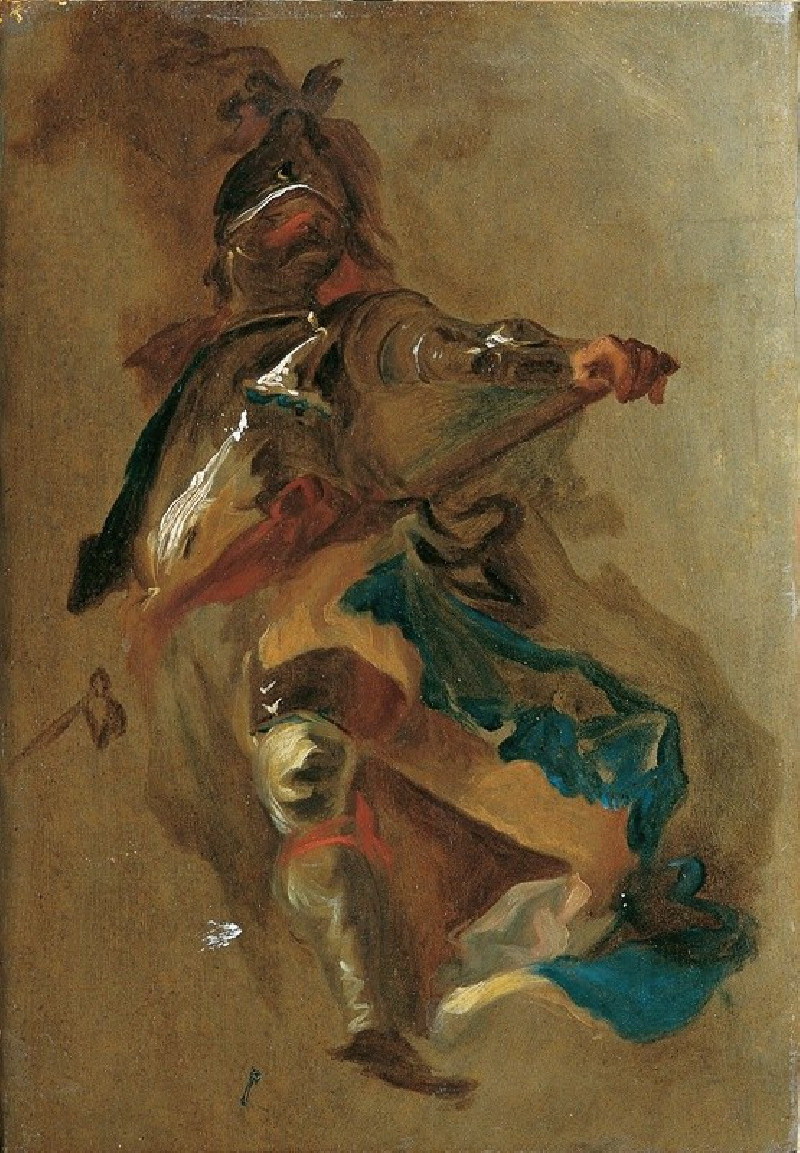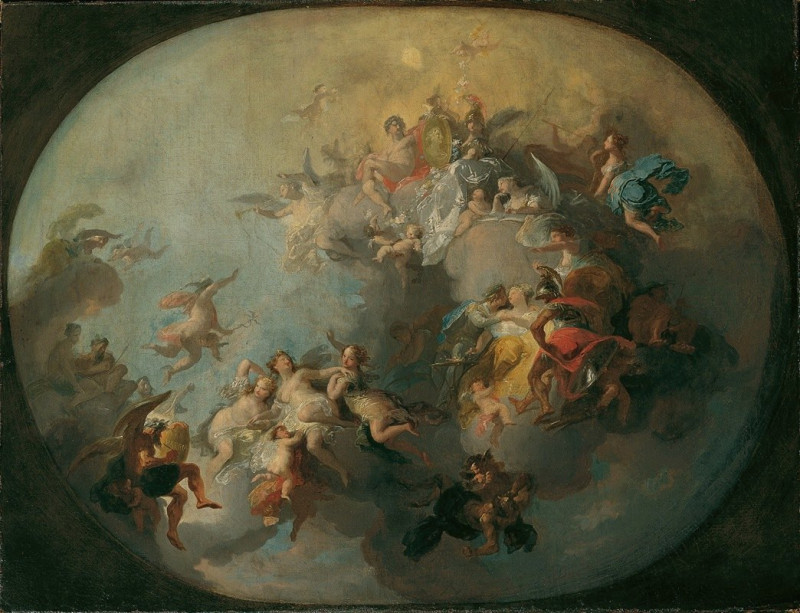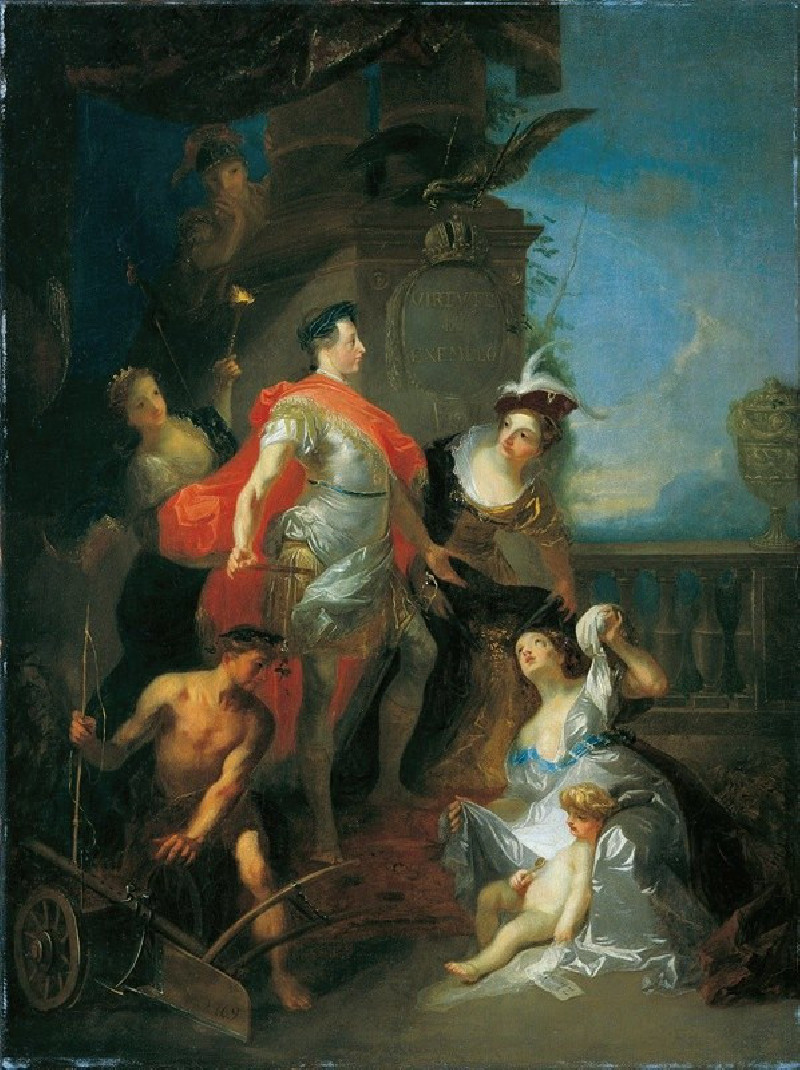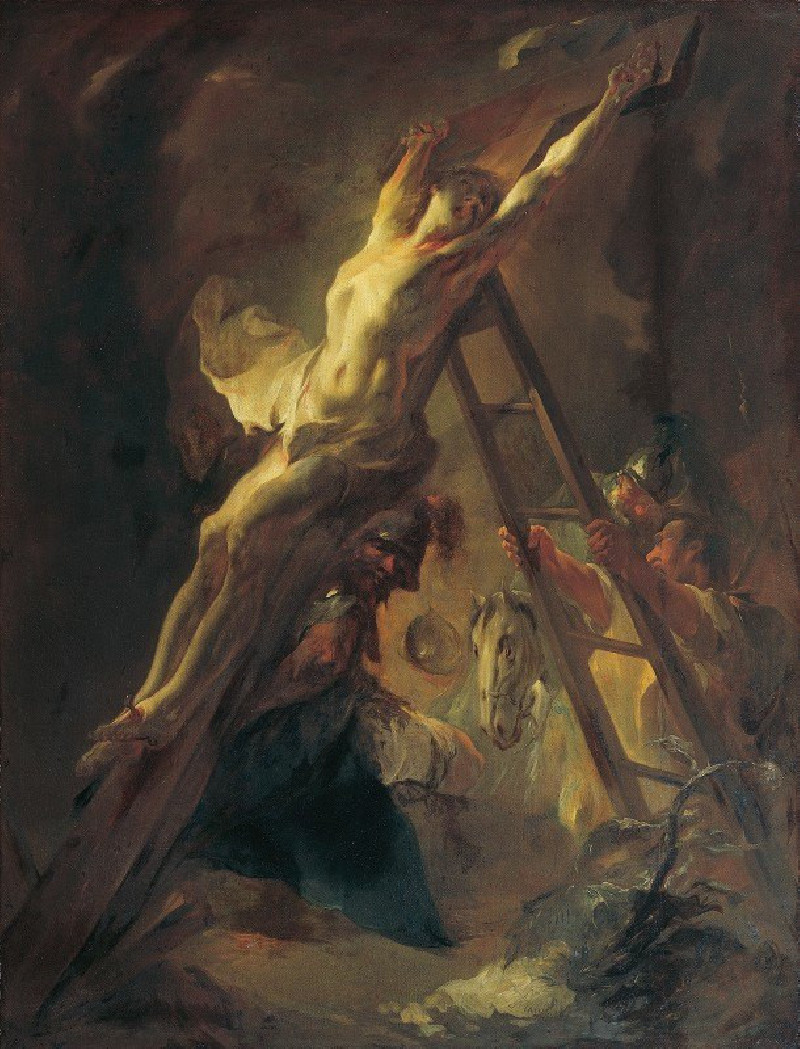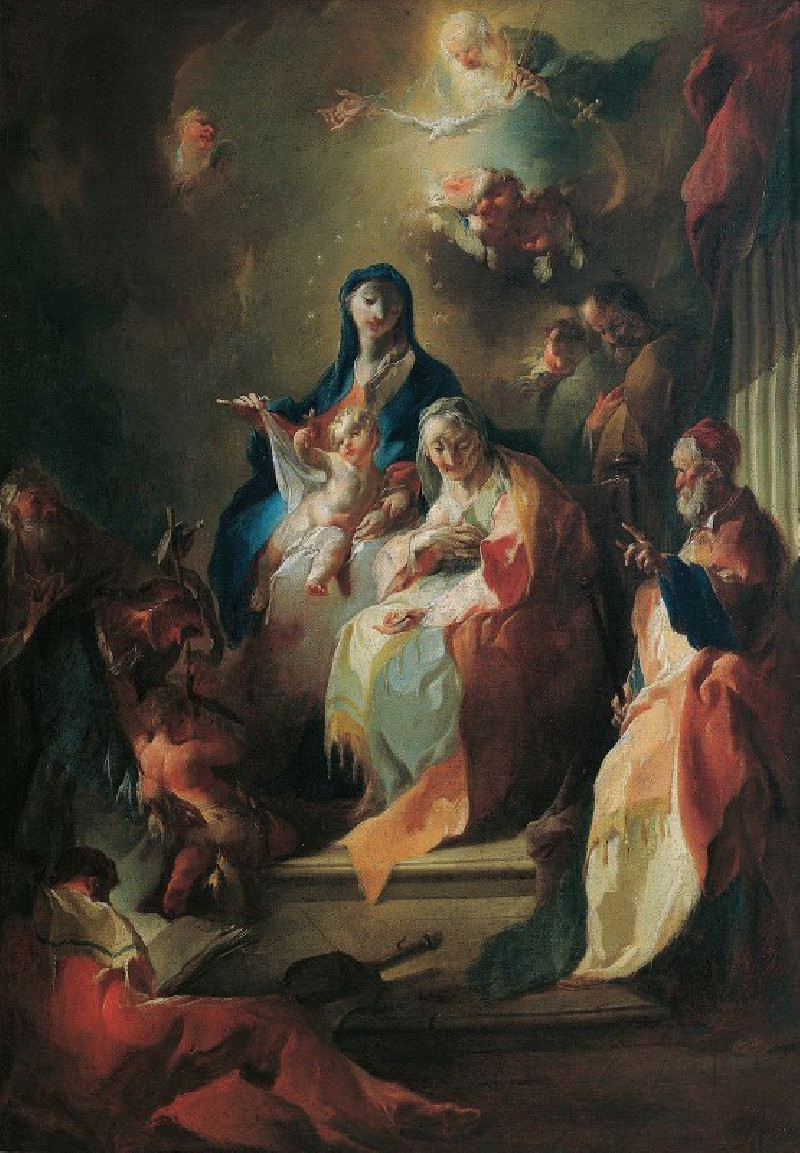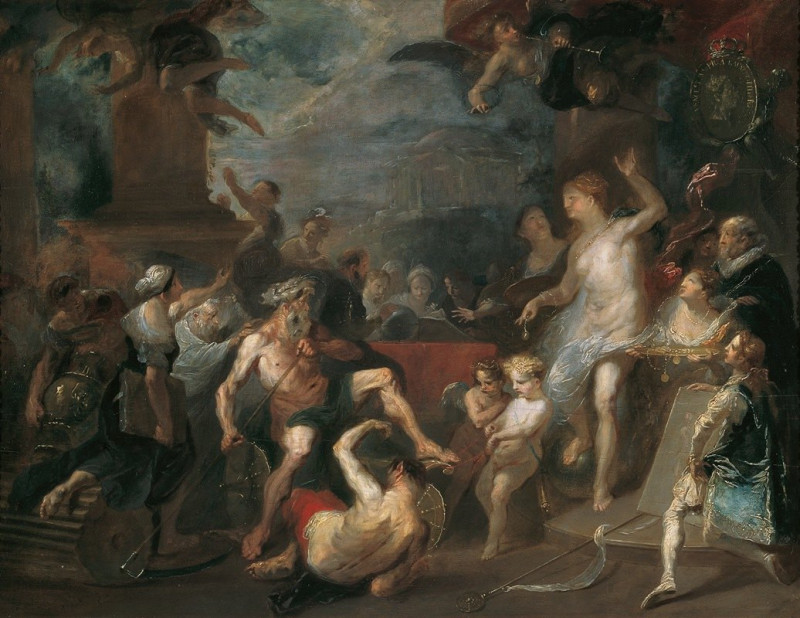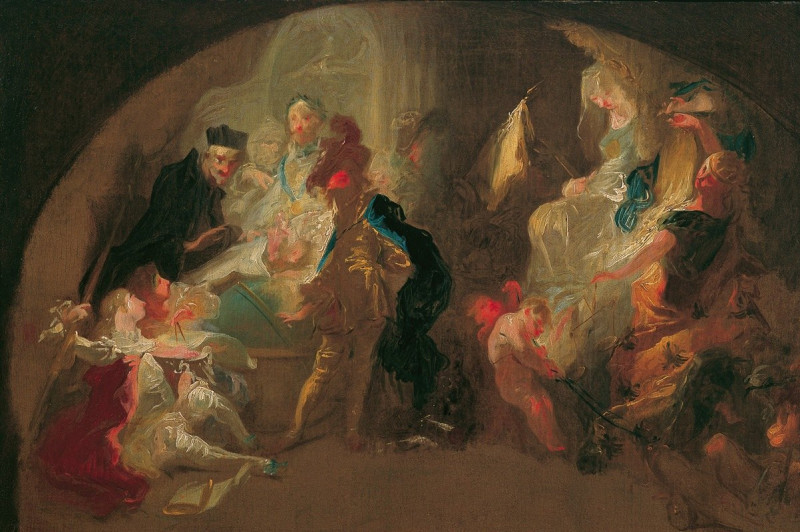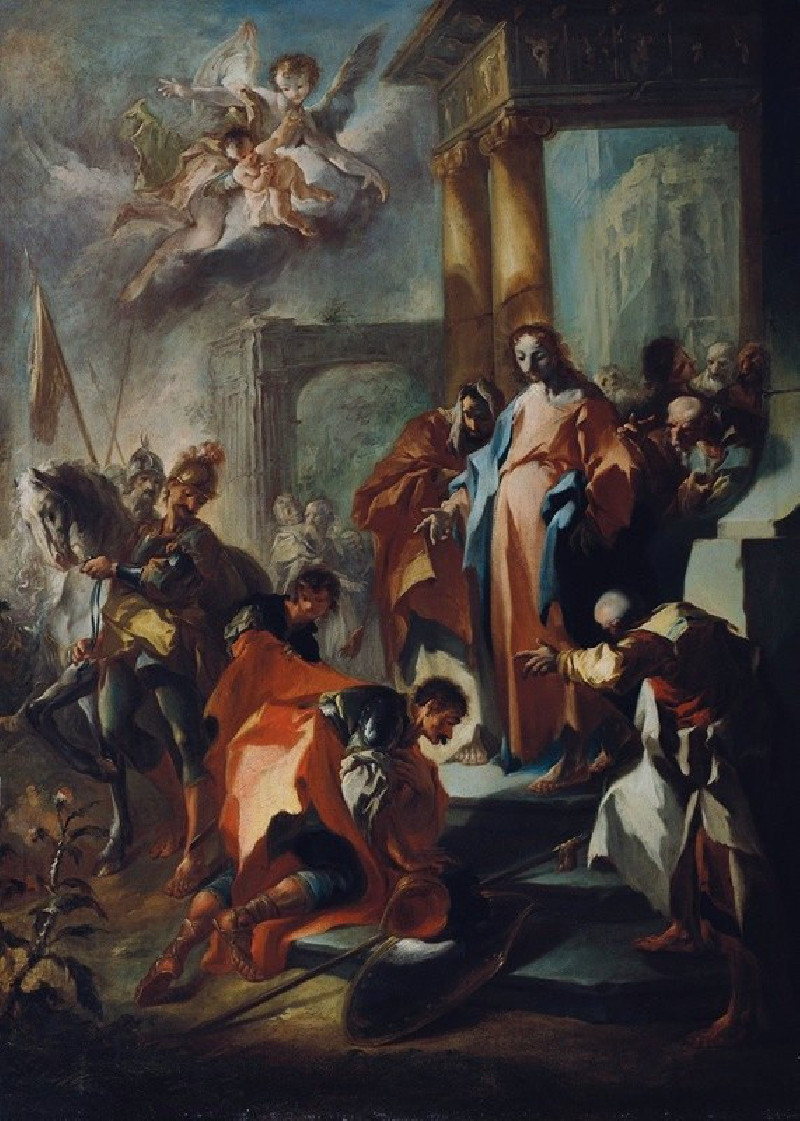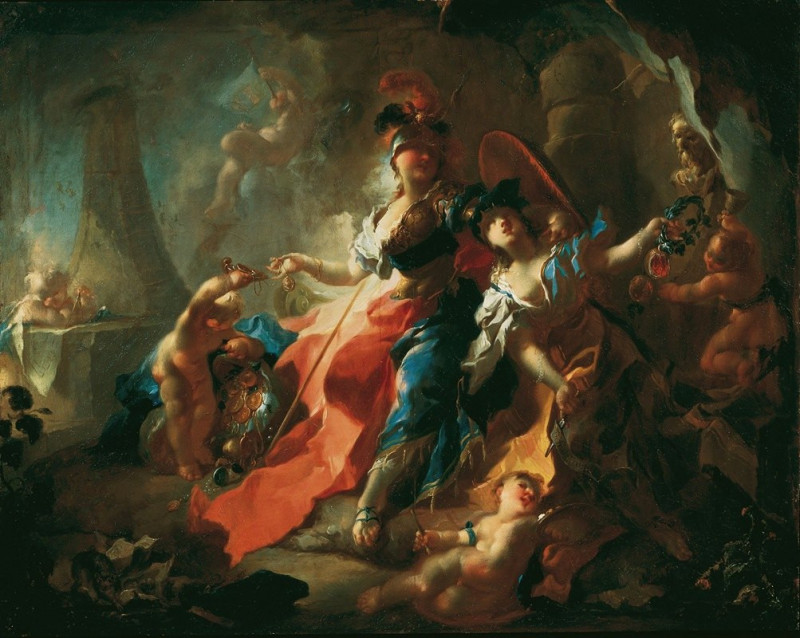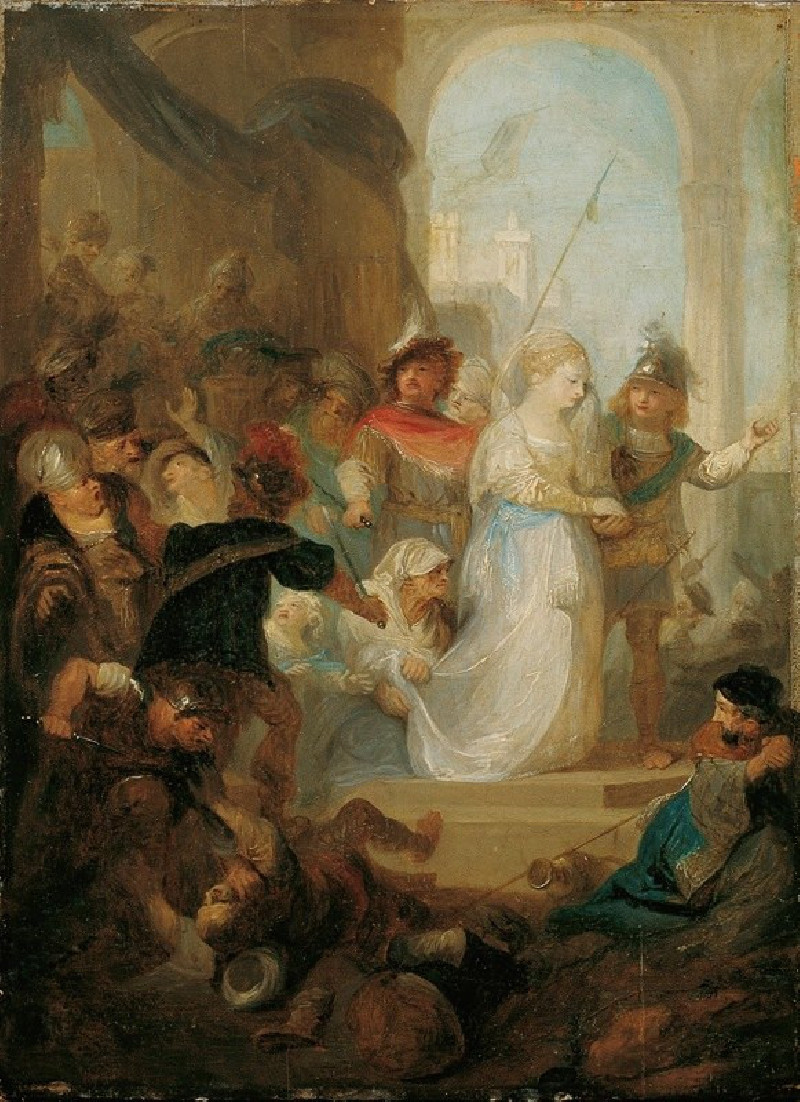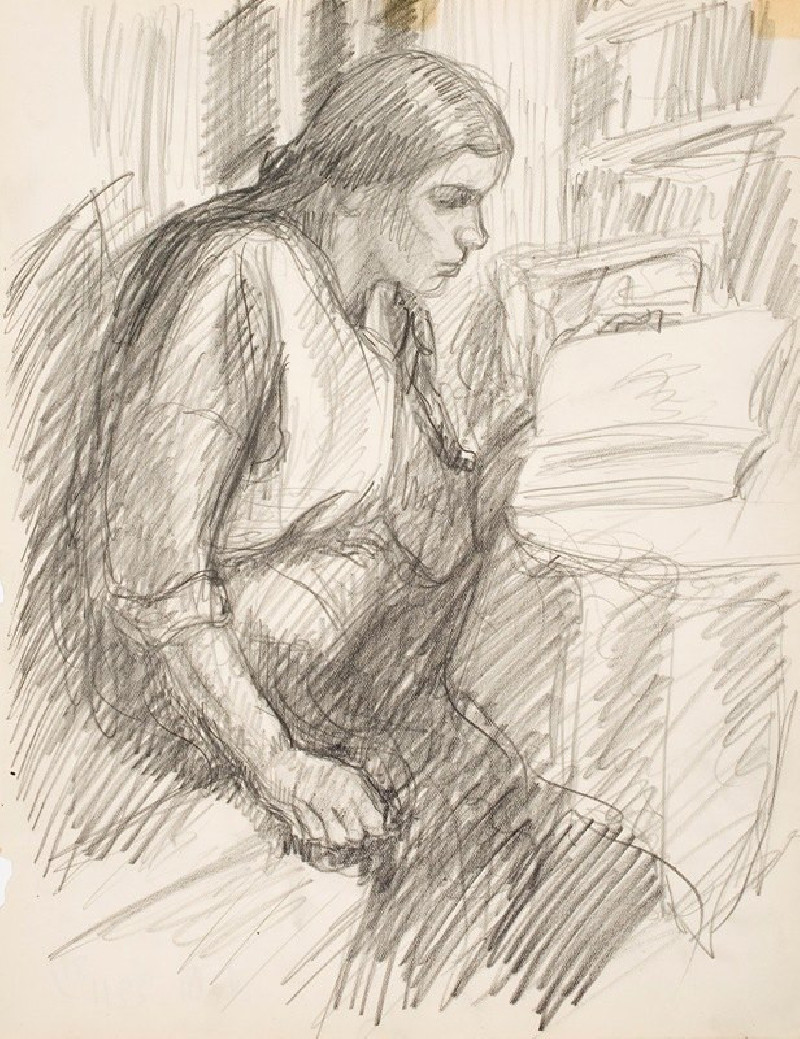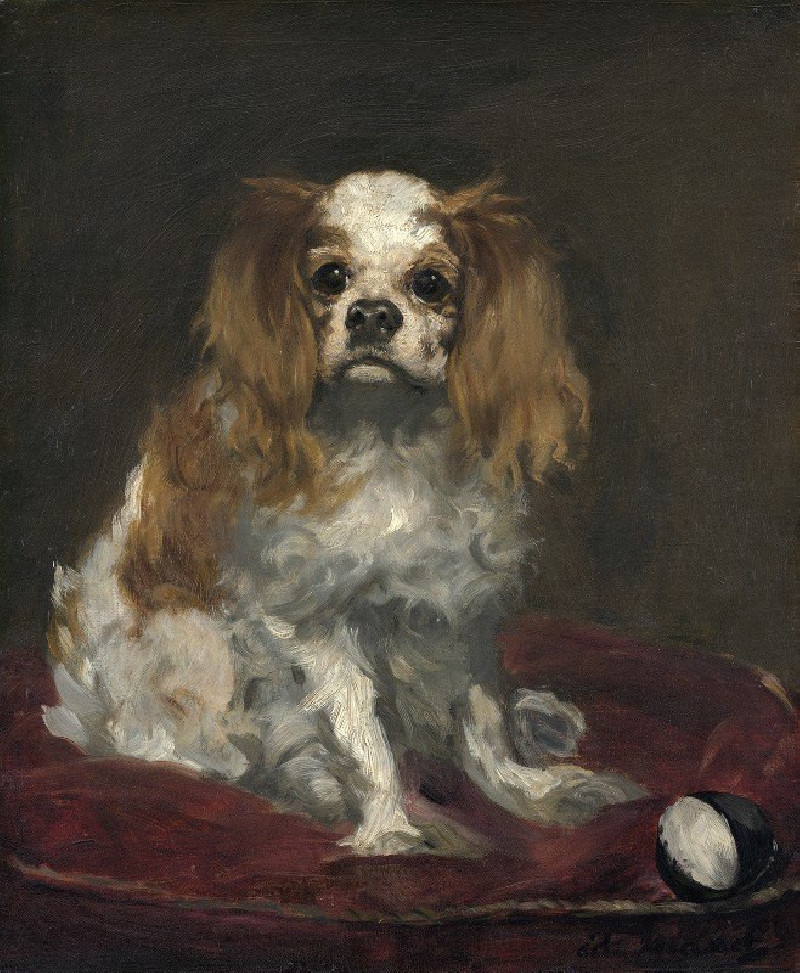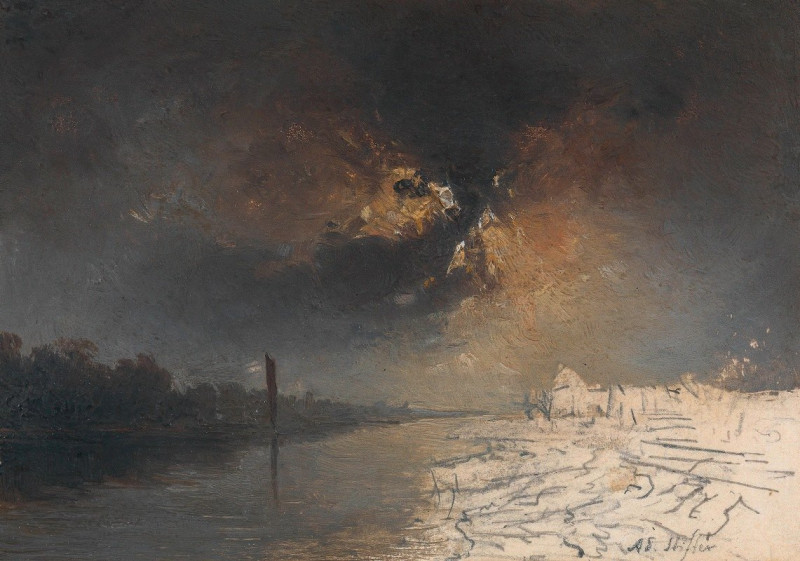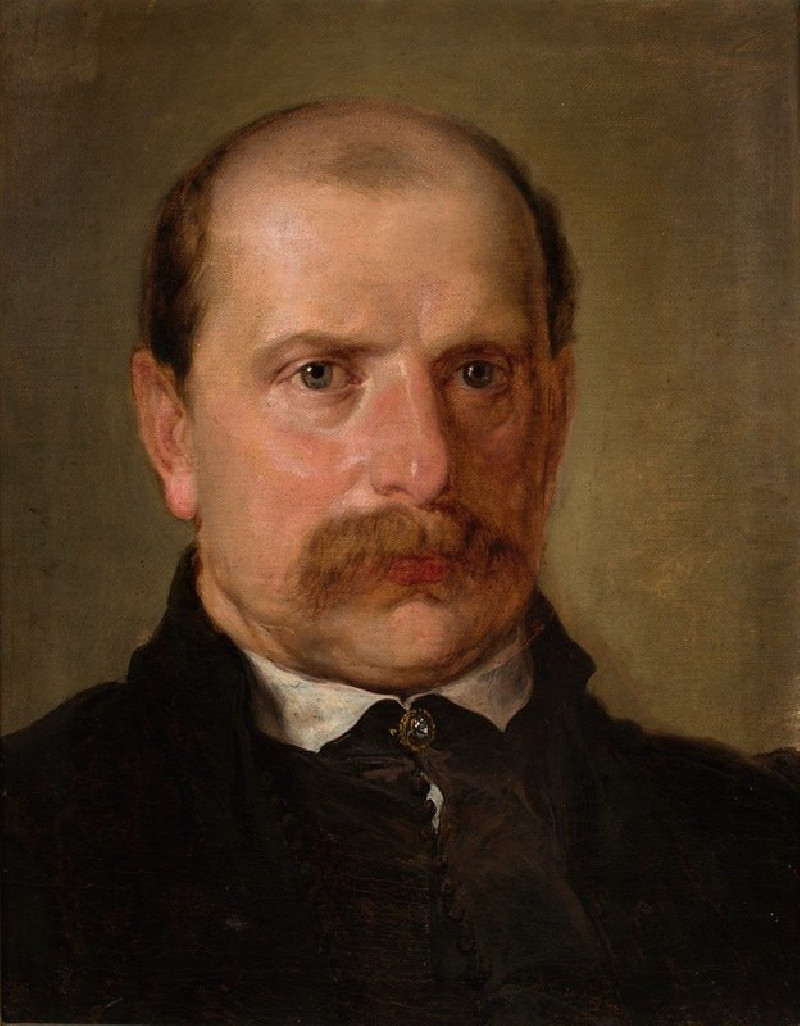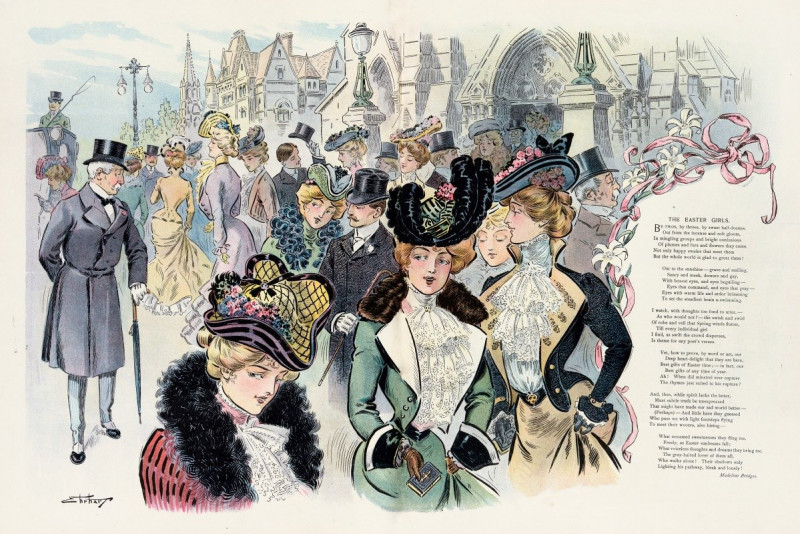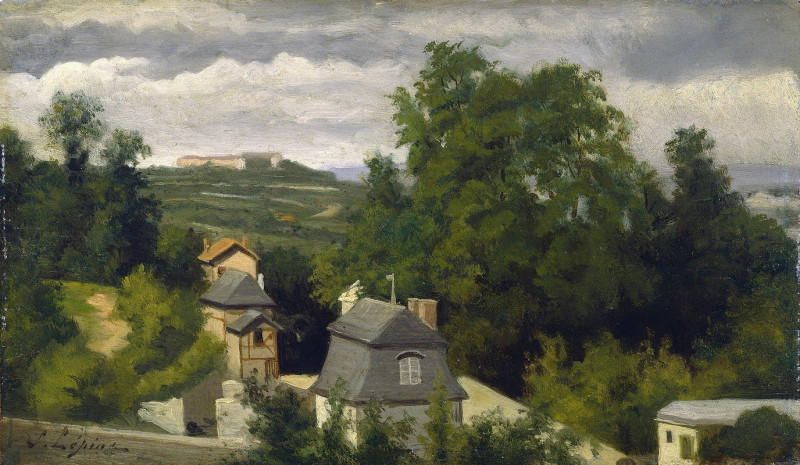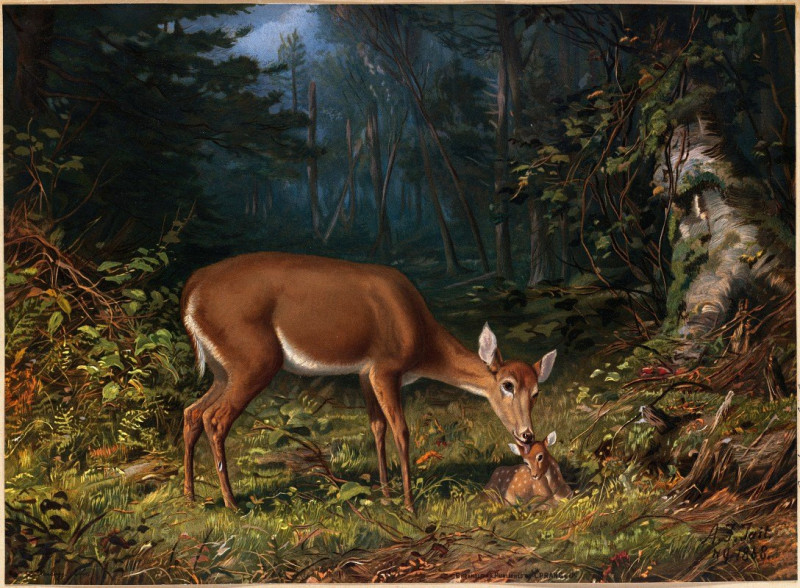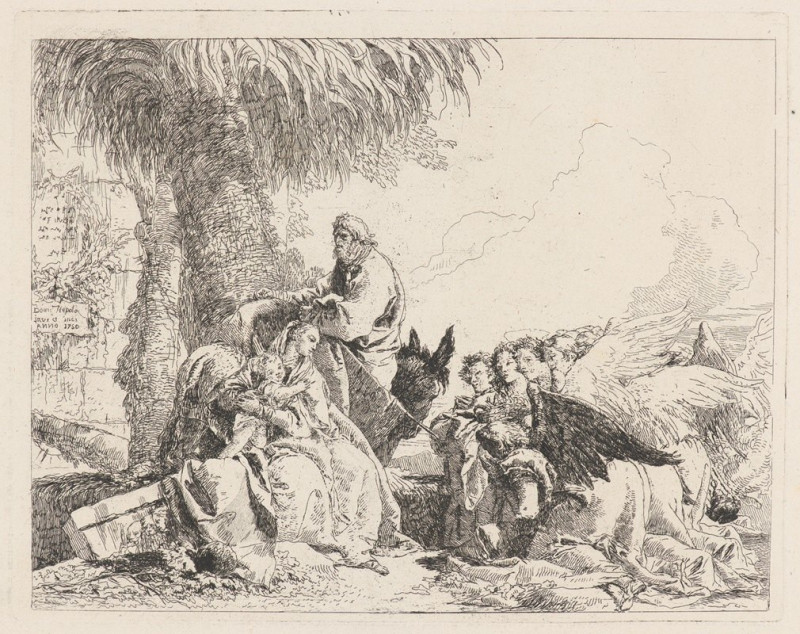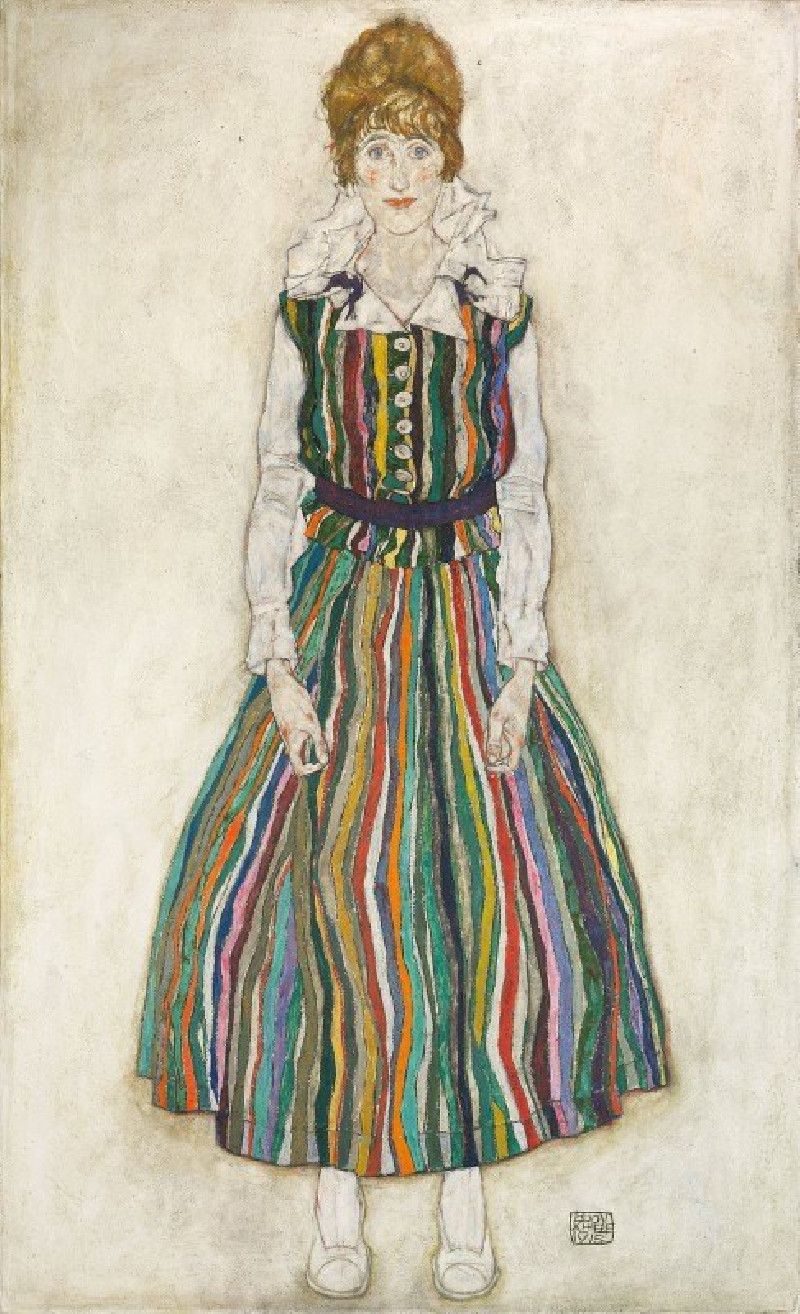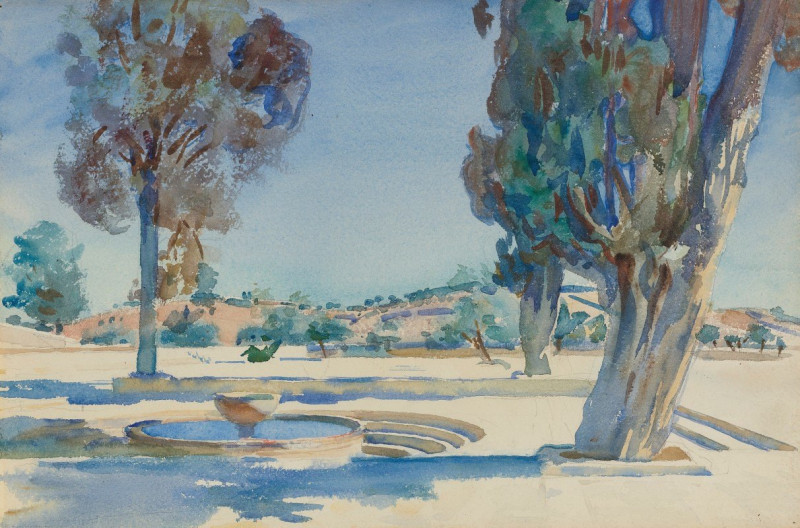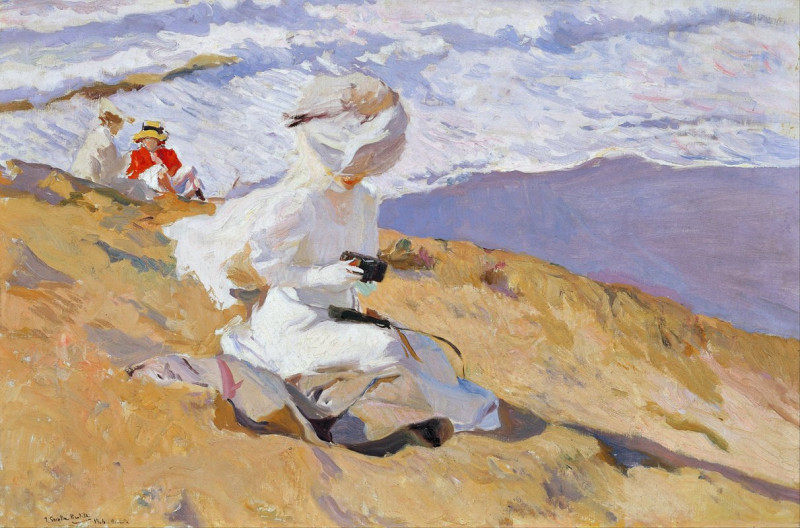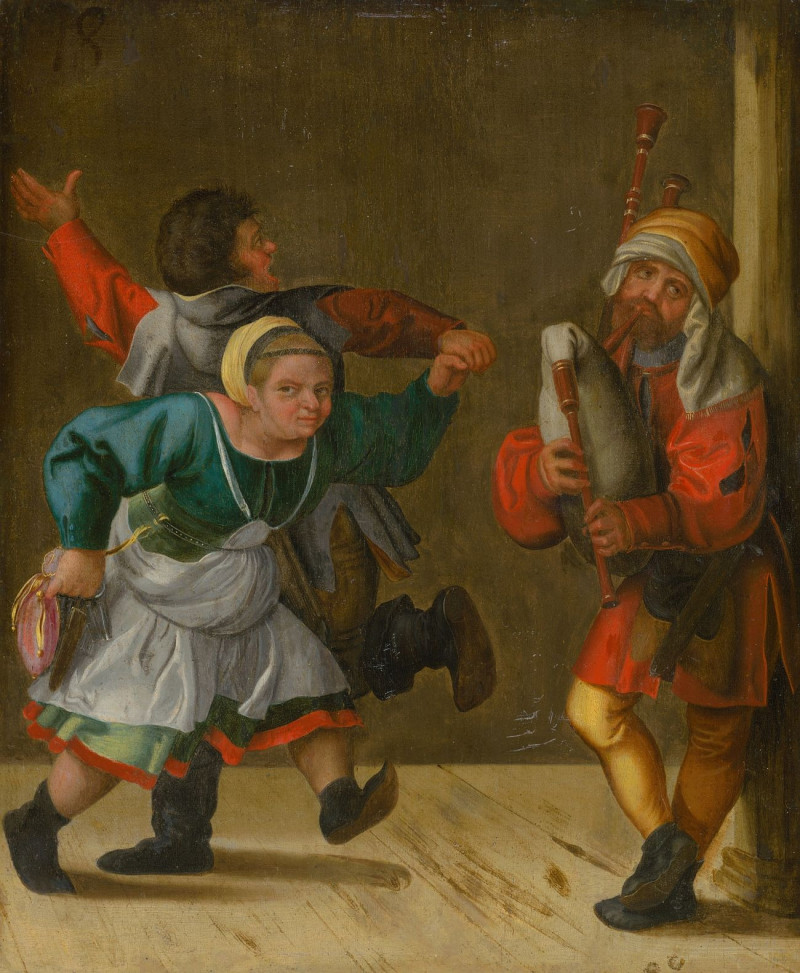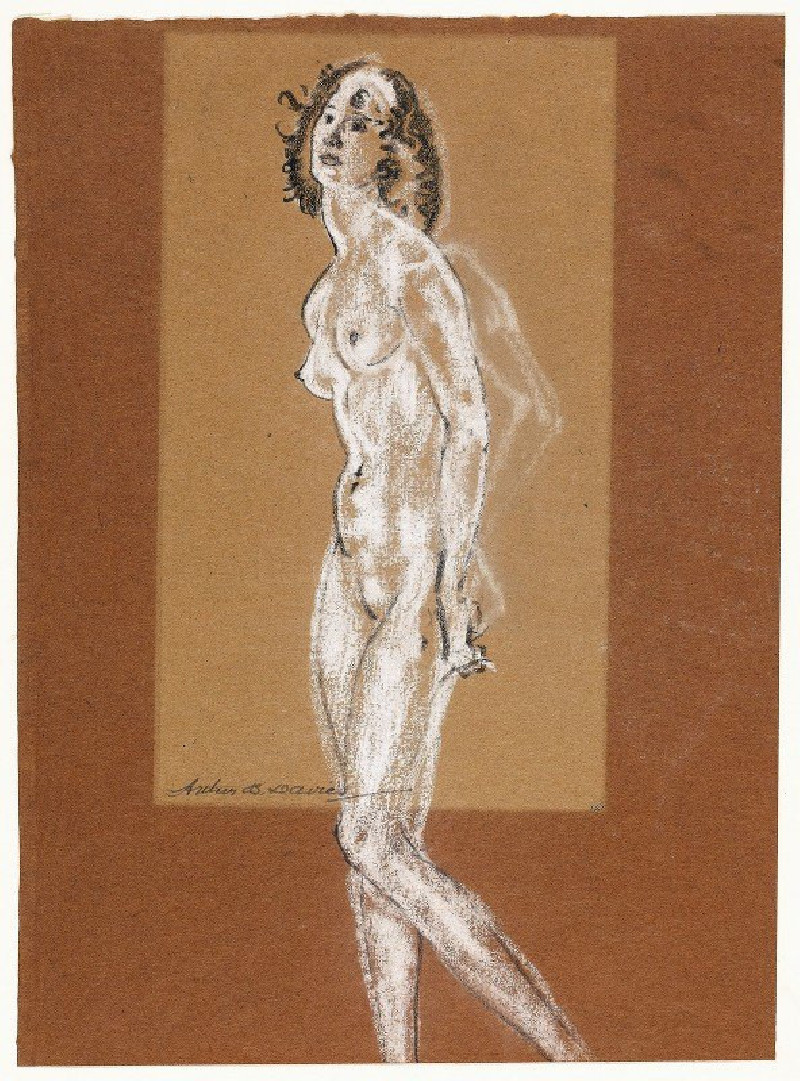Die Blendung Simsons (1787-1790)
Technique: Giclée quality print
Recommended by our customers
More about this artwork
"Die Blendung Simsons" (The Blinding of Samson) by Franz Anton Maulbertsch is a compelling depiction executed between 1787 and 1790, vividly capturing a dramatic biblical scene. The artwork, rich in emotional intensity and dynamic movement, portrays the tumultuous moment from the Book of Judges in which Samson, after being betrayed by Delilah, is overpowered by the Philistines who then proceed to blind him.In this masterful oil painting, Maulbertsch presents a chaotic and energetic scene filled with figures in mid-action. The central figure, Samson, is shown in a vulnerable state, lying on the ground while several men hold him down and gouge out his eyes. The expression of agony on Samson’s face and the ruthless determination seen on the faces of his captors amplify the painting's emotional impact.Interestingly, Maulbertsch uses light to highlight the brutality of the scene and the key figures involved. The gleaming armor of the Philistines contrasts starkly with the darker tones surrounding Samson, drawing the viewer's focus directly to the intense interaction at the painting’s center. This dramatic use of lighting enhances the theatricality of the scene, making the painting not just a visual narrative but an evocative experience.The inclusion of a female figure in the background, observing the scene unfold with a composed demeanor, possibly represents Delilah, adding a layer of betrayal and tragedy to the scene. This painting not only showcases Maulbertsch's skill in composition and use of color but also his ability to stir deep emotional responses through his depiction of human figures in moments of significant biblical and historical episodes.
Delivery
Returns
Franz Anton Maulbertsch (June 7 , 1724 - August 8 , 1796 ) was, alongside Martin Johann Schmidt , the most outstanding painter of the Austrian late Baroque . His expressive art initially broke with tradition, ultimately culminating in classicism and completing Austrian Baroque painting in an idiosyncratic and independent way.

